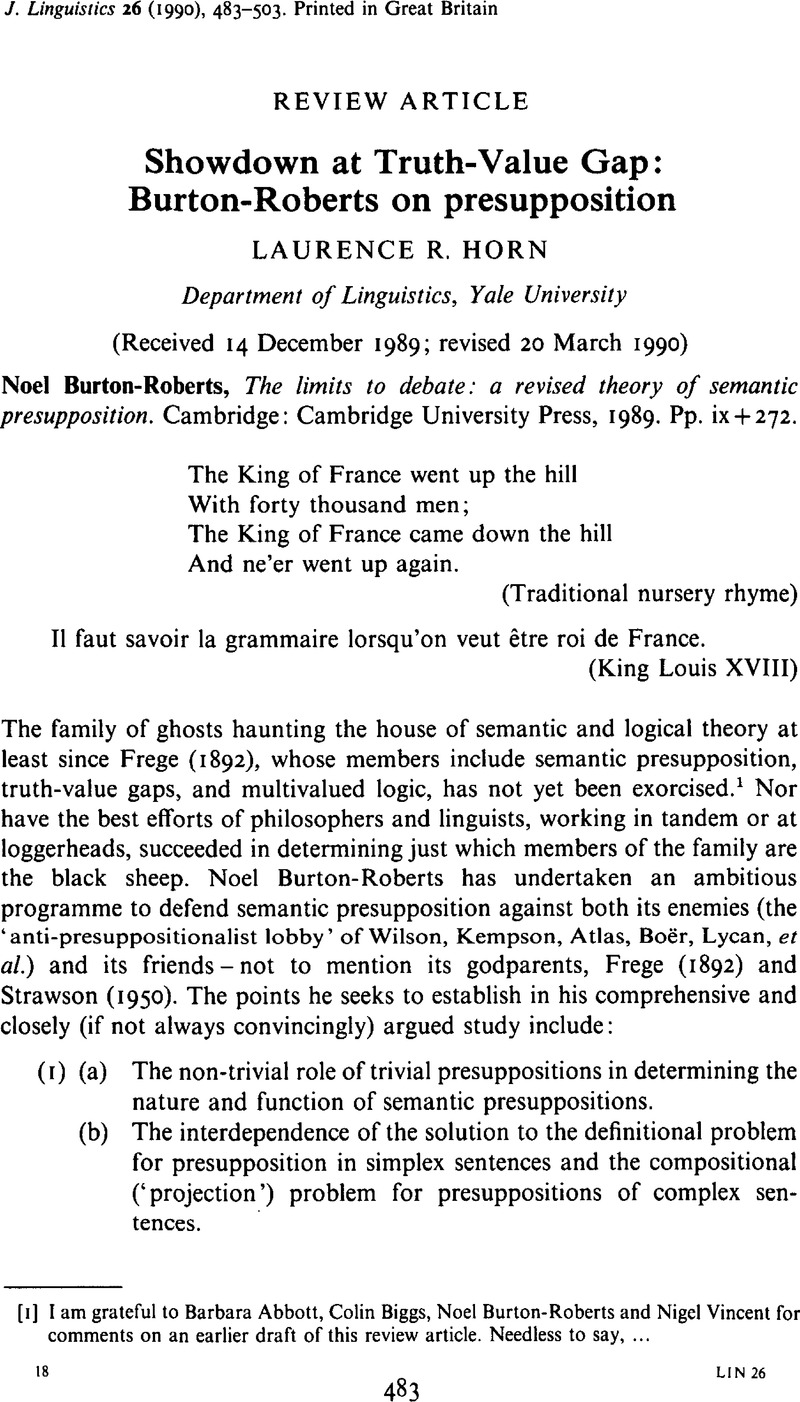Crossref Citations
This article has been cited by the following publications. This list is generated based on data provided by Crossref.
1991.
Review.
Mind & Language,
Vol. 6,
Issue. 2,
p.
161.
KATO, YASUHIKO
1991.
A natural history of negation. By LAURENCE R. HORN. Chicago: The University of Chicago Press, 1989. Pp. xxii, 637.
ENGLISH LINGUISTICS,
Vol. 8,
Issue. 0,
p.
190.
Kreutz, Philippe
1992.
Burton-Roberts's approach to presupposition: A critical appraisal.
Lingua,
Vol. 88,
Issue. 3-4,
p.
301.
Carston, Robyn
1996.
Metalinguistic negation and echoic use.
Journal of Pragmatics,
Vol. 25,
Issue. 3,
p.
309.
Beaver, David Ian
1997.
Handbook of Logic and Language.
p.
939.
Burton-Roberts, Noel
1997.
On preservation under negation.
Lingua,
Vol. 101,
Issue. 1-2,
p.
65.
Iwata, Seizi
1998.
Some extensions of the echoic analysis of metalinguistic negation.
Lingua,
Vol. 105,
Issue. 1-2,
p.
49.
Dennis, Maureen
and
Barnes, Marcia A.
2000.
Speech acts after mild or severe childhood head injury.
Aphasiology,
Vol. 14,
Issue. 4,
p.
391.
2002.
Thoughts and Utterances.
p.
384.
Lee, Hye-Kyung
2005.
Presupposition and implicature under negation.
Journal of Pragmatics,
Vol. 37,
Issue. 5,
p.
595.
Davis, Wayne A.
2011.
‘Metalinguistic’ negations, denial, and idioms.
Journal of Pragmatics,
Vol. 43,
Issue. 10,
p.
2548.
Khemlani, Sangeet
Orenes, Isabel
and
Johnson-Laird, P. N.
2012.
Negation: A theory of its meaning, representation, and use.
Journal of Cognitive Psychology,
Vol. 24,
Issue. 5,
p.
541.
Davis, Wayne A.
2013.
Perspectives on Pragmatics and Philosophy.
Vol. 1,
Issue. ,
p.
303.
Davis, Wayne A.
2016.
Irregular Negatives, Implicatures, and Idioms.
Vol. 6,
Issue. ,
p.
1.
Davis, Wayne A.
2016.
Irregular Negatives, Implicatures, and Idioms.
Vol. 6,
Issue. ,
p.
139.
Cappelle, Bert
2023.
Existential Constructions across Languages.
Vol. 76,
Issue. ,
p.
325.



